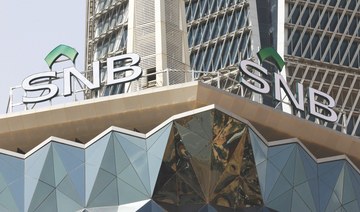LONDON: A surge in the price of crude in the run-up to President Donald Trump’s decision to jettison the Iranian nuclear accord, as well as an agreement by Russia and OPEC to cap production, has been good news for the oil-producing nations of the Middle East.
In GCC countries, higher prices could lift gross domestic product, bolster government coffers and pave the way for budget surpluses or at least smaller deficits.
The recovery could also lead to additional public spending to stimulate consumption in countries that — up until now — have been reeling from austerity following the oil price collapse of 2014.
In truth, the outlook is less than clear. Oil price volatility could now become the new normal, said experts. “If you accept the fact that after Tuesday’s (Iran) decision, the oil market will stay volatile, then here we are ... price movement right now is pretty unpredictable,” said PVM Oil Associates strategist Tamas Varga, cited on Thursday by CNBC.
And this from Adrian Del Maestro, oil and gas strategy director at PwC in an interview with Arab News: “Volatility, in all its ramifications, continues to impact the market. “This is another example of geopolitical factors increasingly supporting oil.”
But given the 18 percent rise in the price since January, won’t it be tempting to ratchet up central government expenditure, easing pressure on consumers who have been hit by higher taxes (VAT in particular), as well as subsidy cuts?
Monica Malik, chief economist at Abu Dhabi Commercial Bank (ADCB) said: “There’s still quite a weak domestic demand environment in the region, although higher crude tariffs are clearly positive for GCC oil exporters.”
Malik reckons governments will take a cautious approach. “Producers will wait and see where the oil price goes from here, and will refrain from doing anything rash,” she said.
An ADCB update on the KSA economy published this week said in the first quarter of this year, government spending rose by 17.8 percent year- on-year, reflecting a marked shift to a more expansionary fiscal stance. “This follows three years of contraction in government spending, including by -0.4 percent in 2017. The first quarter rise was supported by the allowance package for nationals announced in January 2018 and, to a lesser degree, payments from the Citizens Account to support low and mid-income families, it said.
The bank noted that the deficit widened by 31 percent year-on-year to SR34.3 billion ($9.1 billion). “This increase came despite a healthy rise in government revenue in the quarter (up 15.4 percent year on year)."
Despite this, ADCB forecast a narrowing in the full-year fiscal deficit in 2018 to 7 percent of GDP. “We see government oil revenue rising in the remaining quarters of this year, especially with the increase in the price from March,” the bank said.
Jason Tuvey at Capital Economics added his voice to those who say Saudi Arabia is loosening the purse strings.
“Saudi first quarter figures showed the underlying fiscal stance was easing, despite the introduction of new taxes, with the latter more than offset by spending on public sector bonuses and the introduction of a new household allowance.”
A Capital Economics report said Riyadh’s oil revenues would be around 5-6 percent of GDP higher in 2018 than in 2017. “That, combined with higher non-oil revenues, should more than offset the rise in spending.”
It added: “We expect looser fiscal policy to start to support a pick-up in growth in the non-oil economy over the coming months.”
Longer-term, however, Capital Economics expects the oil price to drop back over the next couple of years, possibly to $55 per barrel
by 2019.
Downside risks include a ratcheting up of US shale output that would alleviate potentially tight supply; global energy demand may not hold up as well as expected, while higher energy costs could turn the screws on industry.
“If that happens, it could prompt a resumption of austerity, as KSA and others look to rebuild their balance sheets,” according to Capital Economics.
But it would be churlish to ignore the good news. Saudi Arabia’s current account is back in a surplus, and has been for a few quarters. “That shows they have made a good adjustment,” said Tuvey. The turnaround had come mainly as a result of reduced consumption (as higher taxes kicked in) which had a knock-on effect of cutting imports.
Countries such as Kuwait and the UAE have been riding the oil price slump quite well, according to World Bank data, and their budget and current account positions should show substantial surpluses. But worries persist about Bahrain and Oman, where public finances are stretched.
What about GCC stock markets? Turvey contends that GCC equities haven’t gone up as much as expected given the upward path of oil prices. The Tadawul had drifted in the past few weeks.
That said, there is little evidence regional markets have been discounting for increased geopolitical risk, highlighted by clashes between Israel and Iran in Syria, and the potential for blow-back following the election of a Hezbollah-supported government in Lebanon.
Craig Erlam, senior market analyst at foreign currency broker Oanda in London, told Arab News: “It really does seem to be quite a time since investors took notice of heightened geopolitical risk. Whether it’s complacency or a belief that things will only escalate so far is hard to tell.”
Faster rate hikes from the US Federal Reserve are making a bigger impact on stock markets right now, said Erlam. In its May economic update on the region, the IMF noted that conflicts and geopolitical risks persist, and commitment to the implementation of key fiscal measures and structural reforms could weaken, considering the observed increase in oil prices.
The report added: “(But) the continued commitment to fiscal consolidation, although at a slower pace, could, in contrast, boost investor confidence and result in stronger growth.”
ADCB’s report said that if oil prices remain at the current level, there could be some additional increase in government spending (above its current forecasts).
“However, we believe that this could take time to implement, especially as it will likely be driven by capital expenditure.”
The report said any additional support may be more likely to come at the end of 2018 or in 2019.
Does oil price surge herald an end to austerity in GCC?
Does oil price surge herald an end to austerity in GCC?
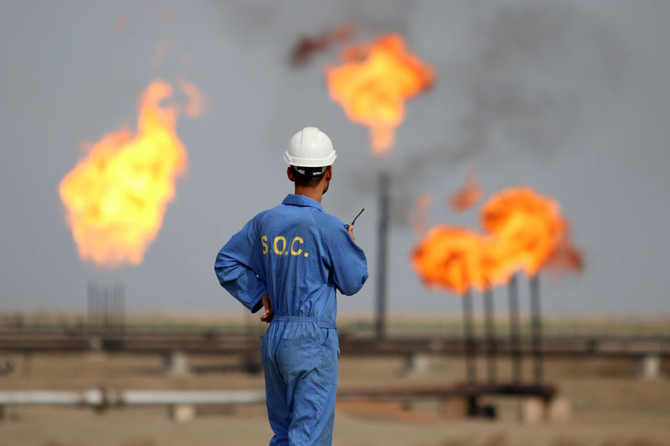
- Crude oil prices have risen 18 percent since January
- Rising prices are good news for governments that have had to cut spending following a slump in prices from late 2014
Saudi banks and capital market poised to drive Vision 2030 objectives: S&P Global
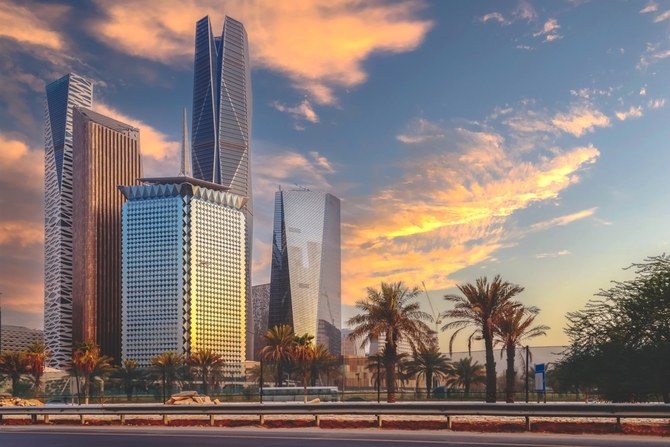
RIYADH: Saudi banks and the capital market are poised to make substantial contributions alongside the Public Investment Fund in achieving the objectives of Vision 2030, stated a report by S&P Global.
The latest analysis by the global rating agency underscores that their involvement in the Kingdom’s economic diversification endeavors will enhance leverage in both the Saudi private sector and the broader economy.
The report, citing public sources, indicated that the Saudi government’s transformation program aimed at enhancing the country’s economic, social, and cultural diversification will necessitate approximately $1 trillion in investments over several years.
“Part of this sum will come directly from the government and the Public Investment Fund, but S&P Global Ratings also expect banks and capital markets to contribute a significant amount,” stated the US-based agency in the report.
It added: “This will inevitably increase leverage in the Saudi private sector and the broader economy, albeit from low levels. The pace and extent of the increase in leverage in the corporate sector remain uncertain.”
As per the report, Saudi Arabia’s banking sector maintains a robust position, characterized by strong asset-quality indicators and overall capitalization.
The credit rating agency further anticipates that the banks’ sound profitability and conservative dividend payouts will persist, thereby bolstering their capitalization over the next one-to-two years.
S&P Global highlighted the expansion of the capital market in the Kingdom, noting that from January to May 2024, 13 private companies have announced potential listings on Saudi Arabia’s main market and parallel market.
The analysis projected that Saudi Arabia will experience a real gross domestic product growth of 2.2 percent in 2024 and 5 percent in 2025, with the non-oil private sector emerging as a key contributor to this expansion.
Earlier this month, S&P Global, in another report, noted that banks in Saudi Arabia are expected to pursue alternative funding options to manage the rapid expansion in lending.
The agency said that this pursuit of external funding could potentially impact the credit quality of Saudi Arabia’s banking sector.
“The ongoing financing needs of the Vision 2030 economic initiative and relatively sluggish deposits growth, is likely to incentivize banks to seek alternative sources of funding, including external funding,” said S&P Global.
Saudi Arabia’s non-oil revenues up by 3% in Q1 of 2024
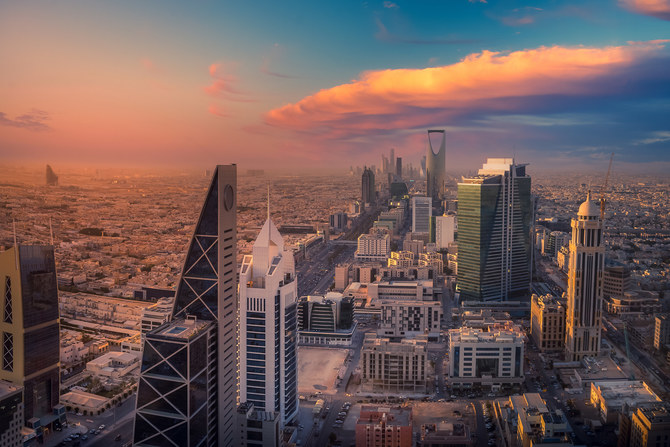
RIYADH: Saudi Arabia’s non-oil revenues rose by 3 percent to reach SR111.51 billion ($29.73 billion) in the first quarter of 2024 the final quarter of 2023, the Ministry of Finance said.
In its quarterly budget performance report, the ministry said the Kingdom posted total revenues of SR293.43 billion in the same quarter, while its public spending amounted to SR305.82 billion.
According to official data, total revenues slipped 18 percent as compared to Q4 of 2023.
In the first quarter of the current year, the Kingdom posted a budget deficit of SR12.39 billion with oil revenues reaching SR181.92 billion.
Saudi bank loans increase by 11% in March to hit $712bn, fueled by real estate activities
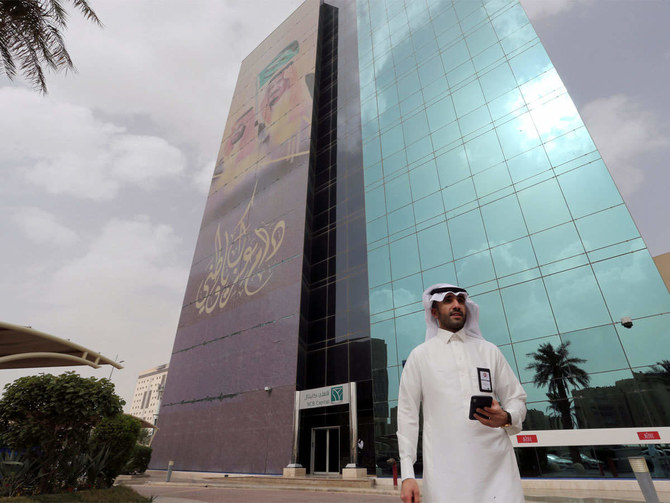
RIYADH: Saudi banks extended loans worth SR2.67 trillion ($711.5 billion) in March, marking an 11 percent increase as compared to the same month in 2023, according to the latest official data.
Figures released by the Saudi Central Bank, also known as SAMA, showed personal borrowings accounted for 35 percent of this growth, while the remaining 65 percent went to the corporate sector, particularly for real estate activities, as well as electricity, gas, and water supplies.
Real estate financing for corporate dealings specifically surged by 27 percent in the third month of the 2024, marking the highest annual growth rate in 10 months, reaching SR275.2 billion.
A study by Mortor Intelligence, which used 2023 as a base year, estimated the Kingdom’s real estate market at $69.51 billion in 2024, and expects it to reach $101.62 billion by 2029, growing at a compounded annual growth rate of 8 percent between 2024 and 2029.
The surge in real estate and construction endeavors may have heightened the need for debt-based financing primarily sourced from the local banking sector. Saudi banks play a central role in the provision of loans for real estate projects.
According to SAMA data, new retail residential mortgage loans experienced a notable increase, reaching a 14-month high at SR7.63 billion in March. This marked a 5 percent rise compared to the amount granted in the same month last year and a 10 percent increase from the previous month.
In March, lending for home purchases accounted for the largest portion, comprising 64 percent of new mortgages to individuals, totaling SR4.91 billion. The most notable growth, however, was observed in apartment loans, surging by 28 percent to reach SR2.24 billion. Meanwhile, land loans experienced a more modest growth of 4 percent, reaching SR474 million in new mortgages.
One factor contributing to this growth could be the need for residential properties from expatriates arriving in the Kingdom, along with government initiatives aimed at modernizing the financial system.
In a March study by Knight Frank, a notable trend emerged among expatriates, with 68 percent expressing a strong preference for owning an apartment rather than a villa. This inclination was especially prominent among individuals aged 35-45 and 45-55.
Growth in lending for electricity, gas and water supplies came as the second contributor in corporate loans after real estate, registering an annual rise of 27 percent to reach SR147.42 billion in March.
According to an April report by Global Data, the key sectors in the Saudi Arabia power market are the residential sector, commercial sector, industrial sector, and others. In 2023, the residential sector had the dominant share in the power consumption market.
The American International Trade Administration also stated in a January report that Saudi Arabia has experienced rapid economic and population growth since the discovery of oil. The population is projected to increase to 40.1 million by 2030.
Due to limited water resources, the country continues to invest in desalination facilities to meet rising water demands, aiming to deliver 2.18 billion cubic meters per year of desalinated water.
The Ministry of Environment, Water, and Agriculture has allocated $80 billion for water projects, with the wastewater treatment services market also expanding steadily according to the report. In 2021, Saudi Arabia built 133 wastewater treatment facilities, marking a 14.66 percent increase from the previous year.
SAMA data also revealed that financing for professional, scientific, and technical activities soared by 54 percent, hitting SR6.4 billion, marking the highest annual growth rate among sectors.
Education loans also showed robust growth, with an annual increase of 28 percent to reach SR6.27 billion. Additionally, financing for administrative and support service activities rose by 20 percent, totaling around SR34.22 billion.
While the proportion of lending allocated to the scientific and education sectors may currently be modest, the Saudi government acknowledges their pivotal significance in driving the Kingdom’s comprehensive transformation agenda.
Recognizing the paramount importance of innovation and fostering a culture of scientific inquiry, the government has implemented diverse initiatives aimed at nurturing these sectors.
These efforts are believed to have played a part in the gradual increase in lending support extended to these sectors by financial institutions. As the Kingdom continues to prioritize knowledge-based industries and endeavors, further advancements and investments in these areas are anticipated to amplify, propelling the nation towards its ambitious developmental goals.
Saudi Arabia’s car imports surge to 160k over last 2 years: official figures

RIYADH: Saudi Arabia’s car imports in 2023 hit 93,199, utilizing all modes of transportation — land, sea, and air — reflecting nearly a 40 percent growth from the previous year.
In the last two years, the Kingdom has imported a total of over 160,000 cars, with 66,870 imports recorded in 2022 alone, according to Hamoud Al-Harbi, the spokesperson for the Zakat, Tax, and Customs Authority, reported Saudi Press Agency.
This positions Saudi Arabia as one of the largest markets globally for automobiles, accounting for more than half of the car sales in the Gulf Cooperation Council countries, and ranking among the top 20 markets worldwide.
According to the authority’s spokesperson, cars were primarily imported from Japan, India, South Korea, the US, and Thailand to the Kingdom during the past two years.
Wael Al-Dhayyab, the official spokesperson for the Saudi Standards, Metrology, and Quality Organization, underscored the rigorous efforts undertaken by the Vehicle Inspection Unit in 2023. They inspected 60,473 vehicles to uphold the highest technical and safety standards.
Concurrently, 18,150 energy efficiency certificates were issued for tire products, highlighting SASO’s commitment to ensuring tire quality and safety in the Saudi market.
Al-Dhayyab emphasized that these endeavors demonstrate the organization’s dedication to enforcing stringent standards, fostering tire quality, and safety.
Moreover, he stressed the body’s pivotal role in advancing energy efficiency and endorsing initiatives aimed at enhancing product safety and economic growth.
Additionally, Al-Dhayyab noted a significant milestone in 2023, with SASO awarding 172 conformity certificates for electric vehicles, witnessing a 465 percent surge from the previous year.
This emphasizes the organization’s crucial role in facilitating the shift toward sustainable energy adoption.
Furthermore, he pointed out that the body issued 1,505 fuel efficiency cards for new light vehicles, indicating its commitment to promoting eco-friendly transportation solutions.
The surge in the import of motor vehicles led to Saudi banks witnessing a 7.67 percent increase in letters of credit to the private sector in the first 11 months of 2023, compared to the same period the previous year.
The data, released by the Saudi Central Bank, revealed that settled LCs and received bills to this sector hit SR155.19 billion ($41.38 billion).
LCs, a financial document issued by a bank, guarantee payment to the seller upon fulfilling specified conditions in a trade transaction.
The growth is primarily attributed to an upsurge in the import of motor vehicles, accounting for around 75 percent of the overall increase.
The import value in this category reached SR39.7 billion, marking a 26.29 percent increase, the data showed.
UAE’s Mubadala Capital plans $13.5bn investment in Brazil’s biofuel sector
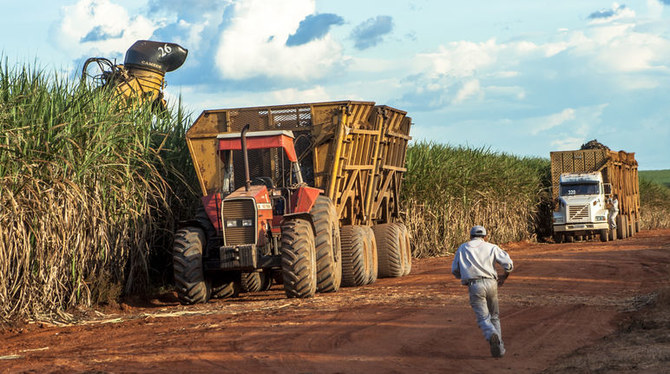
RIYADH: Brazil’s biofuel market is set for substantial growth as UAE’s Mubadala Capital has committed to invest $13.5 billion over the next decade.
Oscar Fahlgren, head of Brazil strategy at the sovereign wealth fund, disclosed the budget for the initiative during an interview with the Financial Times. He divulged the details of the fund’s plans to produce renewable diesel and sustainable aviation kerosene primarily utilizing non-food plant matter.
In his interview with the newspaper, Fahlgren said Mubadala’s Brazilian subsidiary, Acelen, will initiate the development of a large-scale biofuel project by 2026.
The fund’s executive stated that the funds will be sourced through a blend of equity and debt over a span of five to 10 years.
The endeavor will encompass five modules, each valued at $2.7 billion, housing a new biorefinery capable of processing 20,000 barrels of fuel per day. Additionally, it will include the necessary infrastructure and cultivated acreage to sustain the input crop.
“It’s all about feedstock (which) in reality is agriculture. And Brazil is probably the best-placed country on the planet when it comes to agricultural proficiency because of the climate and the fertile soil,” said Fahlgren, adding, “Brazil is to agriculture what Abu Dhabi is to oil.”
The project will also include the conversion of an existing oil refinery in the northeastern Brazilian state of Bahia acquired from government-owned Petrobras in 2021.
“It’s a very important capital project,” Fahlgren said. “I see tremendous opportunity to invest in the green energy transition space in Brazil,” he added.
Mubadala’s venture into bioenergy will leverage its existing $6 billion investments in the country, constituting approximately a quarter of the group’s global portfolio.
“We’ve been very active investing in Brazil, for the past 10-plus years, in an environment where most foreign investors have been shying away,” Fahlgren said.
Mubadala also plans to open a stock exchange in Brazil next year through its Americas Trading Group.
“Brazil is a very large country. It has only one stock exchange. And I think that’s suboptimal infrastructure for the players that operate in this segment,” said Fahlgren.
“It will probably be a staged launch — perhaps start with equities, then expand. No asset classes are off the table.”
The asset management arm of the Emirati sovereign wealth fund is increasing its bets on Latin America’s largest economy, where its holdings span metro lines and medical universities to a majority stake in the local owner of the Burger King brand.
“We’re very bullish on the investment climate in Brazil right now and the opportunities we see,” said Fahlgren. “We do have a number of assets that are relatively mature today, and could be potential exit candidates in the not-too-distant future,” he added.


